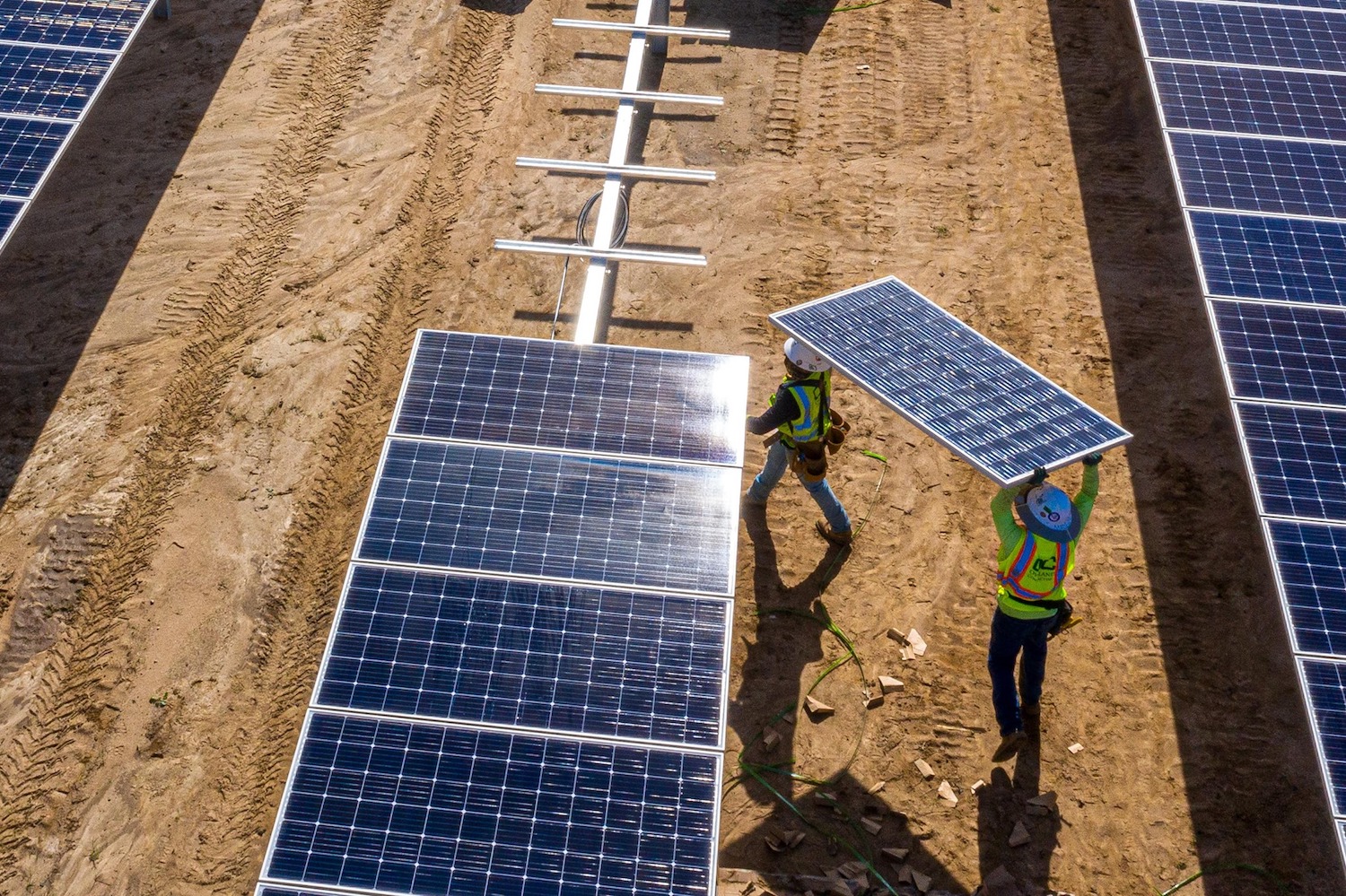Newly inaugurated US President Joe Biden has hit the ground running after only a few days in office, with ambitious plans unveiled and a score of executive orders signed reversing much of the Trump administration’s environmental and energy regulations.
The 78-year-old president is also poised to make good on his campaign pledge to lay the groundwork for the country’s most aggressive climate change agenda in history, rivalling and surpassing even that of the Obama administration.
While it remains to be seen if he will have enough bi-partisan support to push through all of his energy initiatives, especially the so-called Green Deal, there is no doubt that the US, currently the world’s largest crude oil producer and third largest liquefied natural gas (LNG) producer, is about to see abrupt changes that will forever change the country’s energy landscape.
Read more: Huawei founder praises US tech in first words since Biden took over
Biden has already set in motion the process to have the US re-join the 2015 Paris Climate Accord that Trump pulled out off.
He has also issued an executive order to effectively kill the Keystone XL pipeline project designed to carry crude oil from tar sands in Canada’s Alberta province, as well as halting oil and gas leasing in Alaska’s Arctic National Wildlife Refuge – moves that have already set the US oil and gas sector on edge.
However, even before Biden took office, the US was leading China in total overseas green energy project financing. For fiscal year 2020, the US spent some US$2 bn on climate financing to support low-carbon development in developing countries, a Brookings Institute report revealed two weeks ago.
China, the world’s top oil and natural gas user, and by far its largest greenhouse (GHG) gas emitter, is still largely financing overseas oil and gas deals in developing countries.
PROJECT INVESTOR
China, also the largest global energy project investor, financed a total of US$196.7 bn in overseas energy sectors between 2007 and 2016, the Brookings report added.
Over that time period, energy loans issued by China Development Bank (CDB) and Chinese Export-Import Bank (EXIM) amounted to as much as all the energy finance of major Western-backed multi-lateral development banks combined.
Even more troubling from a carbon footprint perspective, of all CDB and EXIM globally financed energy projects, fossil fuel projects received around 75% of the total credits.
Renewable energy at home under the Biden administration, for its part, is expected to deliver around 70% of the new generation capacity built this year, according to a new analysis from the US Energy Information Administration (EIA).
Expect that greener footprint to continue overseas, including joining a move already underway in Europe to not only move away from dirtier burning coal-fired power plants, but to even no longer finance LNG projects needed for both industrial and power demand usage.
PRO-GREEN PIVOT
The Catch-22 for Biden is that a pro-green pivot including hitting the US LNG sector would create headwinds, not to mention fierce partisan bickering, with the US vying with both Qatar and Australia for the top two LNG production slots.
Waiting in the wings are a host of other producers, including an ambitious Russia which aims to also compete for one of the top LNG import slots and capture as much Asia-Pacific market share as possible, including China the world’s second largest LNG importer.
China seems to have no greener build-out plans for its overseas energy infrastructure investment strategy. However, to its credit, it has put more money in both domestic solar and wind projects in recent years, but given the country’s enormous population and its massive energy demand, more needs to be done.
This includes both at home and abroad to help China reach what can still be called an overly ambitious objective set by Chinese President Xi Jinping in September before a viral UN audience to make China carbon neutral before 2060.
TIT FOR TAT
Given the pressure that Xi has now put not only on himself and his own legacy, but on China’s global reputation by his carbon neutral pledge, along with Beijing’s growing habit of trying to match the US tit for tat on the global stage, Beijing could be positioning itself to launch another green energy initiative.
However, it seems that Beijing will wait until Biden more completely unveils his green plan before it formulates or claims to advance any new greener policy change with accompanying media fanfare.
Boston University’s Global Development Policy Center said in a November report that 777 power plants in 83 different countries received funding from Chinese banks and entities. That total includes plants that are operational, under construction and in planning, and together represents 186.5 gigawatts (GW) of generation capacity.
COAL-FIRED
Coal-fired plants form the largest share of these investments by capacity, at over 74 GW, or about 40% of the capacity tracked.
However, the type of power projects financed by China may be finally shifting, the report added. Of the projects that are under construction or planned from November 2020 until 2033, wind and solar represent around 12% of total capacity, with the share of hydropower higher in future capacity (33%) than for currently operating plants (27%).
But, unfortunately for both China and the world, the distribution of these future projects is still far too heavily centered on fossil-based generation to be compatible with global climate needs and objectives.
























